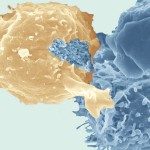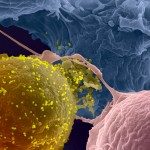Link to Pubmed [PMID] – 27280302
Curr Cardiol Rev 2016 ; 12(3): 186-94
The most important advancements in the Cardiorenal syndrome (CRS) are its definition and subsequent classifications. When the predominant pathology and pathophysiology is the heart, i.e. chronic heart failure (CHF), and where any renal impairment (RI) subsequent to this is secondary, the classification is type 2 CRS. There are unique differences in the pathophysiology and progression of individual subclasses. It is important to understand the evolution of CHF and consequences of subsequent RI as they are becoming increasingly prevalent, aggravate morbidity and mortality and limit many therapeutic options. In this paper we discuss the significance of the type 2 CRS patients in the context of the thematic series.


